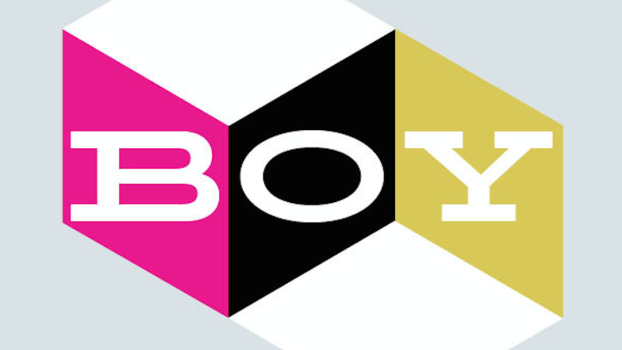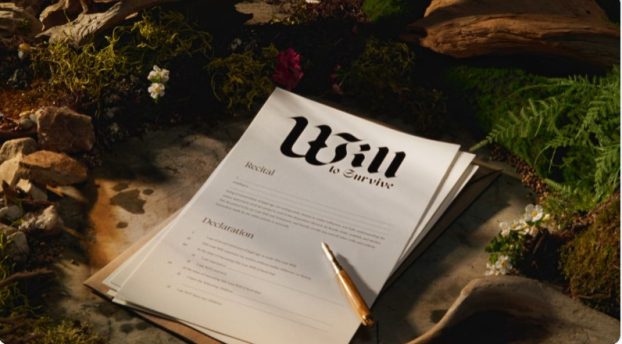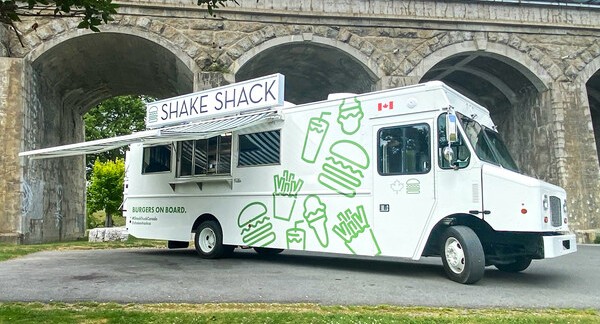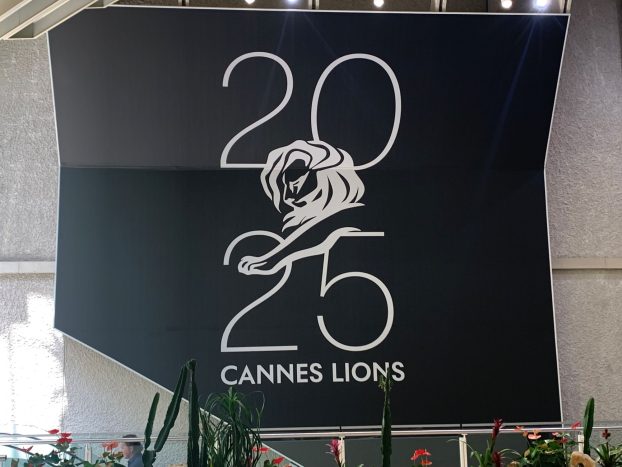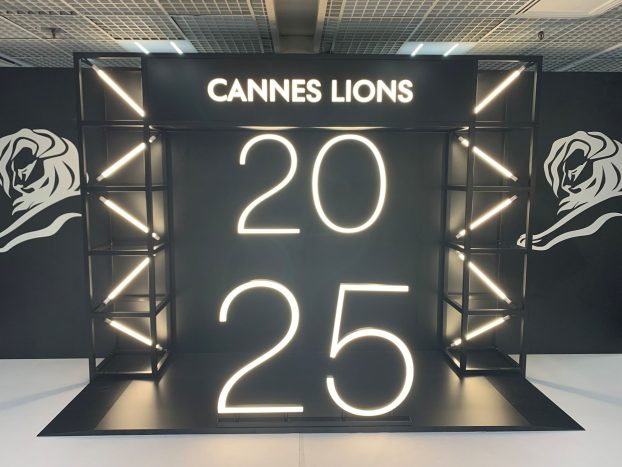
This story was originally published in the 2022 Summer issue of strategy magazine.
By Will Novosedlik
Back in 2002, John Browne, then-CEO of British Petroleum (BP), gave a speech at Stanford University in which he said, “We have to reinvent the energy business. We have to go beyond petroleum.”
To deliver the message of its commitment to transition away from oil production, which at the time still accounted for 98% of its revenues, BP revealed a new visual identity – a green sunburst – as well as new gas station designs and an ad campaign that dealt with the public’s skepticism head on.
In the ads, individuals expressed their disbelief that BP was going to be able to live up to its promise, and the company responded with versions of its grand ambition. It was a clever campaign because, by anticipating consumers’ objections, BP conveyed the impression that it was being honest with itself.
Then 2006 happened: A burst BP pipeline resulted in one of the largest oil spills in Alaska’s history. If that wasn’t enough of a blow to the brand, along came the Deepwater Horizon explosion in the Gulf of Mexico in 2010, which unleashed the largest marine oil spill in history. Under pressure from shareholders, BP began selling off its solar and wind assets. The rebrand was subsequently abandoned.
It is perhaps the most infamous case of greenwashing in history. But most importantly, it shone a bright light on the sometimes yawning gap between what a brand says and what it does to live up to its promise. It’s the ultimate lesson on why you shouldn’t paint your brand into a corner.
The Dangers of Greenwashing
In April 2022, Forrester released an enlightening study that revealed greenwashing is growing, not diminishing, and that “even mature marketers and leading communications experts can unintentionally mislead consumers.”
The study quotes Thomas Prouty, founder and CEO of MIEUX (a CSR agency), who believes many brand leaders are greenwashing without even knowing it: “Greenwashing is the result of internal miscommunication between pushy marketers, who prefer the talk, and humble sustainability champions, who prefer the walk.”
There has also been a lack of authoritative guidance. Where does a marketer look for advice? The Association of Canadian Advertisers (ACA) is currently developing a framework, which it says will be released in the coming months. Ad Standards refers advertisers to the Canadian Code of Advertising Standards, which then punts them to the Competition Bureau and, where relevant, the International Chamber of Commerce Framework for Responsible Environmental Marketing Communications, a comprehensive 40-page document that was only just released in November 2021.
Many brands are at various stages of their green journey today. Some are going to great lengths to be seen as eco stewards with some pushback along the way, and some have a genuine interest and are making strides. The question is, are they doing (or able to do) enough?
The reality is that companies are now more at risk of being criticized for trumpeting green actions that distract from real progress that needs to be made – such as when Coca-Cola promotes recycling of its plastic bottles instead of focusing on developing solutions for consumers to reuse and refill its bottles.
As “green” brands grow, so too does consumer mistrust. Public scrutiny is becoming more real, as eco claims become increasingly misleading. So how can well-meaning brands frame the issue in a way that doesn’t pull the wool over consumers’ eyes and do more harm than good?
(Radical) honesty is the industry’s best policy
There are ways to avoid promoting stopgap measures – going back to the recycling example – that dilute the real issue at hand (i.e. plastic pollution) and end up in consumer backlash. One of them is radical transparency. Electric vehicle co. Polestar has been forthright about the false promises made by the EV industry – a risky move considering its business operates within the category. Its CEO Thomas Ingenlath has openly stated that “electric cars are not clean.” Instead of “cliché-ing its way to a cleaner planet,” the CEO recognizes that his company is a part of the problem and is attempting to start a movement that encourages the industry to look for more environmentally friendly alternatives to electric – acknowledging that it’s only incrementally better than gas.
“Now is a crucial time for the electric vehicle industry to learn the lessons of the past,” Ingenlath wrote in a column for the Telegraph. “We all face issues linked to our manufacturing systems, as well as our supply chain. The materials we use can also be problematic. There is no such thing as a clean car today, and telling consumers that there is, is immoral… So where do we go from here? First we must tell the truth.”
Polestar attempts to show a genuine desire to be a change agent by not only avoiding inflated claims, but also being transparent about the hurdles that exist. In a recent Forsman & Bodenfors commercial that aired during the 2022 SuperBowl, the brand proclaimed it has “no dirty secrets,” “no hidden agenda,” “no hidden promises” and that “no compromises” will be made to achieve its goal of creating a climate-neutral car. It is also the only auto brand to make its Life Cycle Assessment (LCA) publicly available – with Polestar displaying its rating inside stores and online when people make a purchase – and has called on the rest of the industry to do the same.
Radical transparency also means not being afraid to admit failure when an ambitious goal can’t be achieved. In 2018, haircare brand Kevin Murphy made a never-been-done-before commitment to only use ocean plastic in its packaging. However, after two years of research, the company found recycling the plastic couldn’t be done the way it intended. Instead of taking half measures to save face, Kevin Murphy recanted the promise and went back to the drawing board.
“The harsh realities are forcing Kevin Murphy to accept the fact that this task is difficult to uphold and sustain,” wrote CEO Laurent Misischi. “There are a whole host of issues along the supply chain… We can humbly say we now understand the reason it hadn’t been done before… At this juncture our ethics and morality dictate that we communicate this reality in a timely and transparent manner.”
Providing another example, Phillip Haid, CEO and co-founder of social impact agency and accelerator Public, says fashion brand Everlane built its entire brand proposition, from the very beginning, around radical transparency: “They said, ‘Look, we’re going to tell you not only how our clothes get made, where they get made, what we pay people at the factories and how the factories operate; but we’re also going to show you the breakdown of all the costs.’”
How to navigate the green paradox
Brands that make contradictory claims are subject to the most extreme scrutiny. Take RBC, for example, which has been in the news recently because of criticism from environmental groups for its so-called climate blueprint, where it has an executive-led working group committed to helping the company reach net-zero emissions in its lending by 2050 (in line with the Paris Climate Agreement).
But here’s the problem: It’s also a major lender and investor in fossil fuel expansion. Since 2016, RBC has invested more than $262 billion in fossil fuel projects. But if you go to RBC’s Capital Markets website, you see a headline that reads “Protecting the Environment,” set against a photo of a forest and RBC employees cleaning up beaches as part of its Blue Water Project. As a result, climate activists have filed a complaint with the Competition Bureau to investigate the misleading claims RBC has put in its advertising. The bank denies any wrongdoing.

Parkland faces navigating the green paradox as their customers tend to be intentional about their environmental impact.
Parkland is another example of a company that is susceptible to the green paradox. It’s a brand that most Canadians use every day but aren’t aware of it. It owns 3,000 retail locations across Canada, the U.S., Caribbean, and Central and South America. Those locations are all gas stations with a retail component. Your local Pioneer station with an On The Run convenience store is an example.
Since 2017, Parkland has marketed a low-carbon fuel derived from bio-feedstock, which consists of non-food grade canola, tallow and waste from the pulp and paper industry. When blended with conventional crude, it yields a fuel that has one-eighth the carbon intensity of conventional gas or diesel. It claims that, in 2021, its renewable fuel production was equivalent to removing 70,000 passenger vehicles from the road. It is now preparing to build an expanded operation, designed to have ten-times that impact.
“We’re also about to launch an EV charging network in British Columbia – the electric charging destination of the future,” says Simon Scott, director of corporate comms at Parkland. Though it plans to eventually build standalone EV stations, for now, it’s still an add-on to gas stations.
You can see the challenge faced by Parkland. Beyond cost-savings, EV drivers are savvy about sustainability – that’s why they’re EV drivers. They may also be acutely aware of Parkland’s carbon-intensive operation and supply chain infrastructure. That said, its plans are a significant step in the transition away from fossil fuels. Unlike BP, Parkland is being honest in that it’s not promising more than it can deliver.
The company is taking steps to help offset carbon impacts. Take its rewards program Journie for example, which is communicated to consumers on its website, via emails and B2B collateral. For all gas, diesel or propane purchases, individuals and companies can offset anywhere from 5% to 100% of their emissions – with all offsets calculated using science-based protocols and third-party auditing.
So how can companies in the energy sector, and the bankers that fund them, avoid greenwashing? “For many large enterprises, getting to net-zero is not an all-or-nothing proposition,” says Haid. “It’s just not realistic. Even if we could turn on the switch to be completely rid of fossil fuels overnight, we don’t yet have enough capacity to produce enough renewable energy to address the gap. So, first, you have to be honest, authentic and transparent about your current position. Say you’re going to be net zero by 2040. Well, it’s not fast enough, but if that’s what’s realistic for your business, then lay out all the steps you’re going to take along the way. And report regularly on your progress. And then, of course, you actually have to do it.”
Francisca Quinn, co-founder of sustainability and ESG advisors Quinn & Partners, agrees. “We typically say that ‘disclosure trumps performance.’ We always advise our clients to be candid in all communications. Comment on why you did not reach the target and what you are doing to address and improve,” she says. “You can see examples of this in company sustainability reports… And many retail brands use strategies to build awareness and information about sustainability impact as a way to create trust. So yes, being candid is key.”
We opened with the most glaring example of greenwashing, that of BP having to walk back its disastrous rebrand. Does the fossil fuel giant deserve a second chance? In 2020, BP shared its plans for a more “sustainable” sustainability strategy. It aims to reduce oil and gas production by 40% by 2030. It is increasing its investments in renewable energy and electric vehicle charging points, and has pledged to undertake no more oil exploration in countries where it does not already have some upstream operations. It seems the oil giant’s new plan has enough specifics, and is far more transparent, than the last one. It’s safe to say that it does not want to make the same mistake twice.
Urgent: action required
To lessen the pile-up of greenwashing claims, Maple Leaf Foods is demystifying sustainability by educating consumers on confusing terminology and how to be eco stewards.

Maple Leaf Foods’ CEO Michael McCain (pictured above) and VP of sustainability and shared value Tim Faveri are taking action for the environment.
When it comes to evidence backing “green” claims, the statistics are shocking. According to a study released last year by the European Commission, in more than half of 344 different eco claims, brands did not provide sufficient information for consumers to judge the claim’s accuracy. To say there is an urgent need for the industry to align on ways to avoid greenwashing is an understatement.
In 37% of cases, the claim included vague and general statements, such as “conscious,” “eco-friendly” and “sustainable,” which aimed to convey the impression that a product had no negative impact on the environment.
In 59% of cases, the brand had not provided easily accessible evidence to support its claim. Taking all of that into consideration, authorities had reason to believe that 42% of the claims may have been false or deceptive.
A Mintel survey of 2,000 Canadians found that 35% generally ignore or tune out sustainability messaging from brands. The numbers also show that 81% want businesses to provide information about the carbon footprint of their products.
But if a large portion of brands can’t be trusted with their claims, how are consumers to decide where to spend their dollars? That’s where Maple Leaf Foods – which has taken several steps towards achieving sustainability, under the stewardship of CEO Michael McCain and VP of sustainability and shared value Tim Faveri – comes in.
Beyond achieving carbon neutrality and becoming one of North America’s largest producers of raised-without-antibiotics pork and poultry, Maple Leaf Foods is also supporting consumers’ efforts to help the environment by educating them.
Its annual customer survey recently revealed that 92% of Canadians know they have a duty to protect the environment, but 52% don’t know where to start. What’s more, 42% of the respondents say they’re confused by terminology. So the brand created the “Green Glossary,” a guide to understanding key environmental terms, what that means at Maple Leaf Foods and what people can do to make their own impact.
Maple Leaf Foods also recently became one of the founding companies of a new organization called the Canada Plastics Pact, with the purpose to drive innovation and increase recyclability of all types of packaging by redesigning the label to let consumers know which bin to put it in.
A guide to sustainability communications
A lot more brands are frightened of greenwashing these days, says Ryan Skinner, co-author of a recent Forrester report. “They don’t want to go out into the market, set their foot wrong and have a big scandal blow up in their faces. They’re afraid of blowback on the brand getting to the Board, which is very concerned about reputational risk, but [is also] pushing at a high level for the brand and the business to become more sustainable.”
Some obstacles can generate paralysis on the part of marketers. The expectations for them to get it “right” adds an extra layer to how they’re used to working. Brand leaders’ days are filled with activities related directly to getting products and services to market. Now they’re expected to make decisions around other considerations when it comes to sustainability comms.
“So, on the one hand,” says Skinner, “they’re scared of making a mistake that could land them in hot water, but on the other, they’re terrified by the list of considerations and saying, ‘How am I going to do all this?’”
While marketers may not control operations or product decisions, they are responsible for stakeholder expectations when creating marketing messages. Forrester proposes “key perspectives” in which marketers can safeguard their sustainability communications.
Customer and Community Insight: Understand which of your customers really care, trust your efforts and are ready to critique your brand if you miscommunicate. Develop listening programs around communities, leveraging machine learning to analyze unstructured data and sentiments on social media.
Brand and Product Strategy: Align your brand personality and your customer experience vision with your sustainability claims. Create a panel of key internal stakeholders (R&D, product, operations, marketing, finance) and external stakeholders (clients, NGOs) to push the high-level brand and product strategy shifts, as well as to co-create.
Campaign and Agency Briefing: Bring sustainability experts in and seek out guidelines for sustainability communications that marketers can use for strategy and brief creation, such as the U.K. government’s Green Claims Code, or The Fair Program, published by Union des Marques in France.






